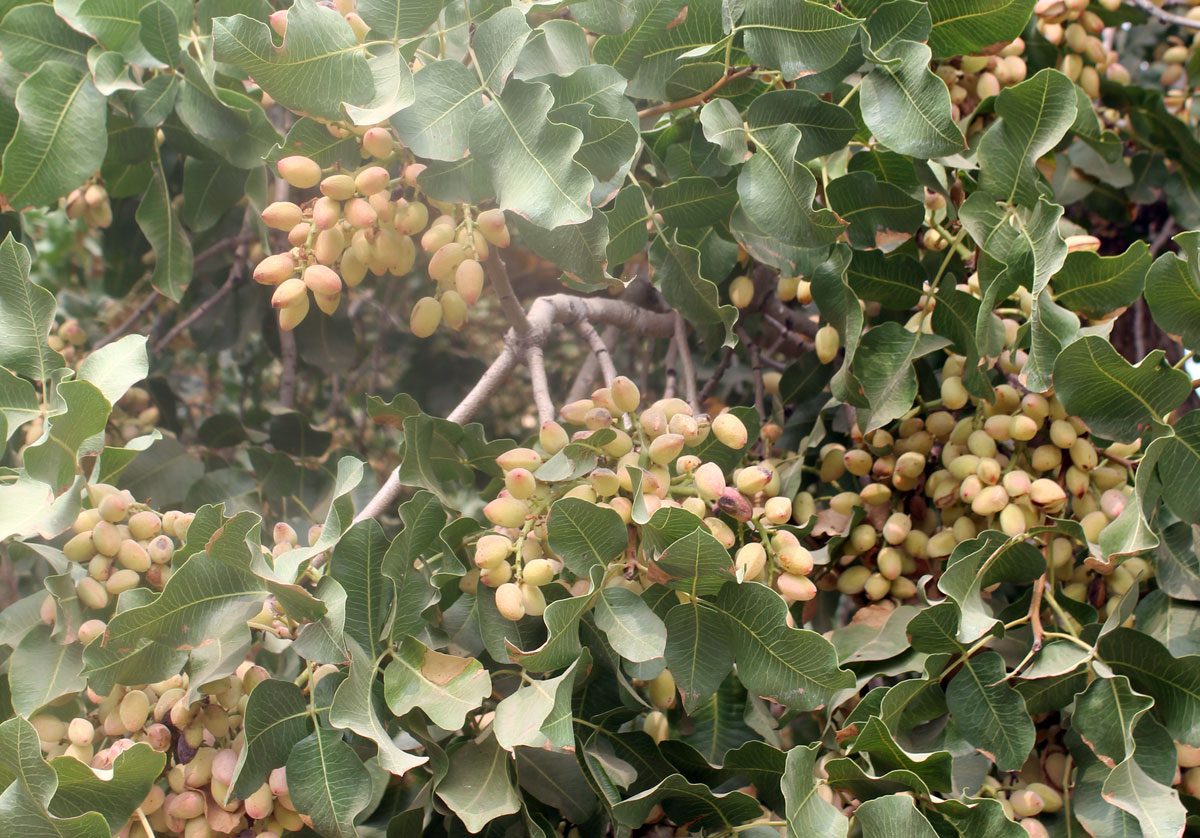
Following pistachio nutrient uptake patterns will help to meet the tree’s needs without over-supplying.
UCCE Pomology and Soil/Water Advisor Douglas Amaral, at the Advances in Pistachio Water Management Workshop, said growers need to use the experience of the potential for a particular orchard and then consider the prevalent environmental conditions when choosing the right rate for nutrient application.
“The right rate requires setting a realistic yield goal,” Amaral said.
Previous year’s yield, drought, winter chilling and spring flowering weather can be critical in making decisions, he said. Trees should be evaluated in April and after fruit set. Estimates are fine, Amaral said, since they will always be superior to using the same N regime every year. Frequent, small fertilizer applications made during the growing season should be used, adjusting the amount applied based on changes in anticipated yield.
For N application time, conduct a preseason yield prediction, calculate demand less N from all sources and apply to meet difference. When leaves have just emerged, 12.5% of annual N demand should be applied. In May, 25% of annual demand is applied, adjusted according to leaf analysis and updated yield estimate. In June, an application of 25% adjusted to updated yield is applied. The July application is 37.5% and occurs during greatest period of crop demand.
Amaral noted that uptake of N, K and P occurs uniformly from leaf-out to harvest.
Drought conditions have implications for nutrients. Lower yields mean higher residual soil nutrients for the following year. Decomposition is also slower in dry soils. The supply of mineral N does not decrease under drought conditions. Microbial biomass and N2O emissions decline, and NH4 increases with increasing drought intensity. Increasing drought also decreases phosphorus availability. Potassium improves drought stress tolerance, Amaral said. However, as K movement relies on water availability, drought can restrict K diffusion rates and result in less available K for trees. Maintaining adequate crop K is critical for plant drought resistance.
Following a drought affected growing season, fall soil sampling is recommended as it allows for enough time to adjust the fertilization program for the next year.
Pistachio tree nutrient uptake patterns in an ‘on’ season shows nutrient uptake in grams per tree with N at 243 at spring flush, 543 at nut fill and three postharvest. In an ‘off’ year, N uptake is 317 grams per tree, 403 at nut fill and zero postharvest. Phosphorus uptake in an on year at spring flush is three grams per tree, 54 at nut fill and zero postharvest. In an off year, uptake at spring flush is 26, 47 at nut fill and zero postharvest. Potassium uptake is zero at spring flush in an on year, 1014 at nut fill and 74 postharvest. In an off year, three grams at spring flush, 479 at nut fill and zero postharvest.

Cecilia Parsons
Cecilia Parsons has lived in the Central Valley community of Ducor since 1976, covering agriculture for numerous agricultural publications over the years. She has found and nurtured many wonderful and helpful contacts in the ag community, including the UCCE advisors, allowing for news coverage that focuses on the basics of food production.
She is always on the search for new ag topics that can help growers and processors in the San Joaquin Valley improve their bottom line.
In her free time, Cecilia rides her horse, Holly in ranch versatility shows and raises registered Shetland sheep which she exhibits at county and state fairs during the summer.















